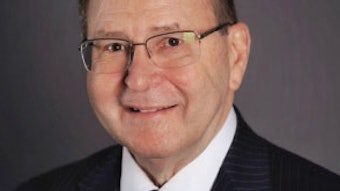Advances in Laryngeal Surgery: An International Perspective
The field of laryngology arguably had its start in Europe with such giants as Benjamin Guy Babington, Johann Czermak, Morell Mackenzie, and others in the 19th century.

The field of laryngology arguably had its start in Europe with such giants as Benjamin Guy Babington, Johann Czermak, Morell Mackenzie, and others in the 19th century. Since then, the field has continued to flourish in the United States and internationally. Below are excerpts from an International Symposium on advances in laryngeal surgery, which included contributors from Turkey and Singapore. This was presented during the AAO-HNSF 2020 Virtual Annual Meeting & OTO Experience.
Anterior Glottic Webs
Anterior glottic webs, whether congenital or acquired, present a treatment challenge for otolaryngologists. Acquired webs are usually iatrogenic and occur most commonly after multiple papilloma surgeries. Although not all glottic webs require surgery, common indications for surgical intervention include airway obstruction and dysphonia. Historically, surgical treatment of glottic webs involved endoscopic resection followed by repeated lysis of adhesions. Fortunately, this has been largely abandoned. Current surgical treatment is performed endoscopically or transcervically, in one or two stages, using the laser or cold instrumentation, and may or may not use a stent. Endoscopic single-stage procedures have obvious advantages for the patient and are most commonly used today.
McGuirt et al. first described a one-stage endoscopic single mucosal flap procedure without keel placement in 1984.1 In 2002 Schweinfurth described an endoscopic single-stage, double mucosal flap procedure without stenting where all mucosal surfaces are covered.2 Xiao et al. reported their experience with 32 patients using this technique.3 More recently, Yilmaz described his experience in 2019 with 12 patients using a double mucosal flap that he named the “butterfly mucosal flap technique.”4
In this procedure, the web is divided in the axial plane. The superior mucosal layer of the web is elevated laterally using cold instrumentation and kept attached to one vocal fold while the inferior half of the web is preserved as a flap based on the contralateral vocal fold. The superior mucosal flap is then sutured with multiple 6-0 polyglactin sutures to the inferior surface of the vocal fold upon which it was based, and the inferior mucosal flap is similarly sutured to the superior surface of the vocal fold to which it is pedicled. This results in all surfaces being covered with mucosa, thus minimizing the risk of reformation of the web. Although technically challenging, the butterfly mucosal flap technique is a highly effective single-stage endoscopic surgical option for the treatment of anterior glottic webs.
Bilateral Vocal Fold Immobility
Bilateral vocal fold immobility is a potentially life-threatening condition that can present acutely or subacutely. Otolaryngologists should be able to quickly diagnose and select the appropriate treatment option. Although tracheostomy remains the mainstay of treatment in the acute setting, other surgical options that maintain phonation and deglutition should be considered thereafter. These include posterior cordotomy, temporary or permanent suture lateralization, and arytenoidectomy. Although debate exists regarding which technique is best, subtotal laser arytenoidectomy has been successfully employed to treat bilateral true vocal fold immobility at two tertiary care medical centers in Belgium and Singapore. The advantage of subtotal arytenoidectomy lies in the fact that it maintains a certain degree of rigidity along the posterior limit of the arytenoid frame, preventing inward collapse of the mucosa and thus lowering the risk of aspiration. Remacle first described a series of 41 patients from Belgium with a mean follow-up of 56 months in 1996.5 Voice outcomes were minimally affected, and peak expiratory flow rates were markedly improved after the procedure. Prasad presented a series of five patients aged 57-82 years who underwent endoscopic CO2 laser subtotal arytenoidectomy over an 18-month period for bilateral vocal fold immobility by the same senior surgeon. Their diagnosis varied from previous stroke, thyroid surgery, as well as idiopathic causes. Eighty percent were successfully decannulated, and of those still alive, none have had any further stridor. One patient failed decannulation due to poor swallowing function and aspiration.
Sulcus Vocalis
Sulcus vocalis is an uncommon laryngeal lesion that appears as a longitudinal depression on the vocal fold parallel to its free edge on laryngoscopy. Histologically, there is a disruption of the vocal fold microarchitecture, which involves the epithelium, superficial lamina propria (SLP), and vocal ligament to some extent.6 This results in impairment of vocal fold vibration and consequently vocal quality that may be breathy, high pitched, or diplophonic. Although the etiology and pathologic process have not been well defined, there appears to be a genetic basis.7,8 Three types of sulci have been defined: physiological, sulcus vergeture, and pocket type, with progressively increasing depth and worsening vocal quality.9
Treatment depends on several factors, including depth and extent, location, vocal expectations, and the presence of secondary pathologies.10,11 With minimal complaints no treatment may be necessary. Sometimes the warmth in tone may be beneficial for a professional voice user; however, the elevated pitch may be problematic for males as it causes a feminine voice quality. Voice therapy is effective at elevating subglottic pressure that improves glottic closure and vibration resulting in increased power and timbre but may also cause undesired pitch elevation.
Vocal fold augmentation by injection or medialization thyroplasty improves glottic closure in patients with breathiness, but in cases with high-pitched dysphonia, it has a very limited effect in reducing the fundamental frequency. In these cases, relaxation thyroplasty is more effective at reducing the pitch and improving vibration as well as ease of phonation.
The sulcus vergeture and pocket types result in a shallow, stiff SLP and increased likelihood of secondary pathologies, respectively. Consequently, they more often require treatment. The location of the sulcus is important in choosing the treatment as well as predicting subsequent outcomes. Kocak classifies sulci anatomically as “supraconal,” “periligamentary,” or “compensatory.” Supraconal sulci may be difficult to detect preoperatively as the medial margin of the vocal fold often hides the pathologic indentation. Insertion of the flexible laryngoscope to the glottic level improves visualization; however, they may not be diagnosed until operative direct laryngoscopy is performed. Surgical treatment is best performed through an incision made lateral to the sulcus and undermining medially. A fascia or fat graft is then placed in the pocket developed and the incision reapproximated with 8-0 polyglactin sutures. Periligamentary sulci may be both the vergeture or pocket type with the latter often diagnosed when they collect keratin debris and form a cyst. Careful excision of the sulcus epithelium and cyst sac results in excellent outcomes. For compensatory sulci, surgical elevation of the ligament from the underlying musculature alone improves vibration whereas surgical excision may result in worsening of the voice and should be avoided.

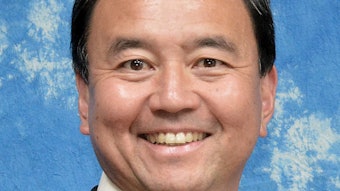



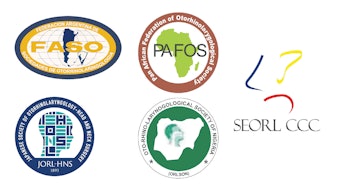

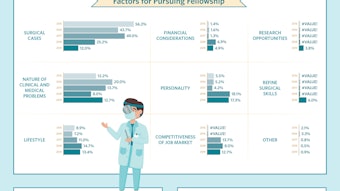



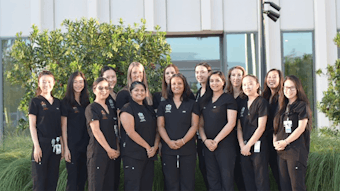
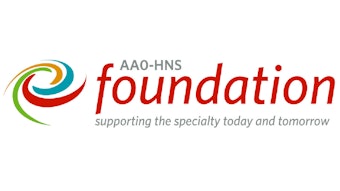
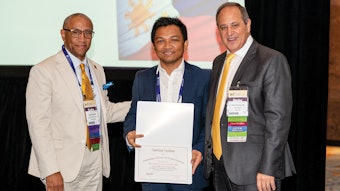
![Getty Images 1013668346 [converted] 01](https://img.ascendmedia.com/files/base/ascend/hh/image/2022/03/GettyImages_1013668346__Converted__01.6244bdb1d9995.png?auto=format%2Ccompress&fit=crop&h=191&q=70&w=340)

